Cradle Modules
Cradle is an integrated requirements management and systems engineering environment with the features, flexibility and scalability for the full lifecycle of today’s complex agile and phase-based projects.
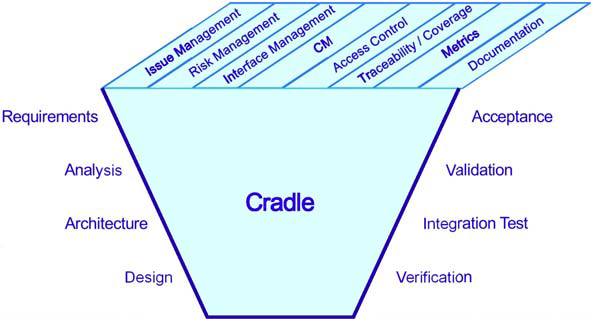
From concept to creation, from Cradle to grave.
Cradle is unique. It provides the tools and features to create and manage all your data, at all stages in your systems development, and at all levels. By managing all the data in one place, only Cradle can provide traceability across the entire lifecycle in one tool. Without Cradle, you have to assemble many products from many vendors, and you will still not have the full traceability that Cradle can provide.
What does Cradle Provide?
Cradle provides full requirements management, analysis, design, architecture and performance modelling, test, risk and interface management and metrics in one product. You can use all of these facilities, or combine Cradle with tools from other vendors. If you have such tools then Cradle will link to them, extending their scope from a part of the system lifecycle to all of it.
Cradle is multi-user, multi-project, distributed, open and extensible. It links to your existing desktop tools to create a tailored environment to suit your process.
Cradle provides built-in issue, risk and interface management. It supports comparative trade studies and analyses. Cradle provides a built-in configuration management and control system with baselines, version control, change histories and formal change control. It bidirectionally links a WBS and progress reporting to your project planning tool. With these capabilities, Cradle removes the need for you to try to connect risk, CM or change tracking tools to your systems engineering. Cradle provides everything you need, integrated and ready to use.
Access Control and Authentication
Cradle has customisable, hierarchical, access control facilities and integrates with your authentication, access control and security mechanisms including firewalls, LDAP and SSL. Cradle provides user-definable views of project data, tailored to each stakeholder group. With customisable navigation, review and entry tools and tailored web UIs, Cradle shows each user the data that they want to see, in the way that they want to see it.
Cradle Databases
Projects use user-defined, arbitrarily extensible databases, linked to external files, URL resources and data in external repositories. Each database is configuration controlled, with change histories, baselines, versions and variants, managed by configurable change requests and change tasks.
Cradle Access
Cradle supports off-line and remote access from geographically separate groups. Internet and VPN access is provided, with full support for project and company firewalls and DMZs.
It connects dispersed teams together, with tailorable discussions, alerts and e-mail.
Cradle Modules Overview
Cradle is modular, using floating licences to share resources dynamically across the project. The Cradle modules overview is:
- Cradle-PDM provides a project infrastructure, from access control and user accounts, through a user-defined schema, phase hierarchy, team hierarchy and access controls to configuration management and open external interfaces.
- Cradle-REQ provides requirements management from external source documents to baselined, engineered requirements linked to the rest of the system lifecycle. It allows you to define and manage user stories, validations, test cases, and any other types of information for all of your process.
- Cradle-MET provides user-definable metrics to gather and analyse statistics from project data.
- Cradle-SYS is a flexible analysis and design modelling environment. It allows any number of models to be built and grouped into model hierarchies in distinct analysis and design domains. Models are fully cross referenced to requirements and all other information. SysML is also supported.
- Cradle-DASH provides user-definable Key Performance Indicators (KPIs) calculated from live project data in user-defined dashboards shown as tables or dials.
- Cradle-PERF provides performance assessment, budget apportionment and data aggregation facilities for design models at any level in a system development.
- Cradle-SWE provides code generation and reverse engineering for C, Ada and Pascal, to synchronise design and source code.
- Cradle-DOC provides user-defined project document generation and a formal document register of project deliverables.
- Cradle-WEBP provides web publishing of project data to static, hyperlinked, websites for external stakeholders.
- Cradle-WEBA allows read-only and read-write access to project data through multiple, user-defined, web UIs that are tailored to each stakeholder group. It also provides external access to Cradle items through URLs.
- Cradle-RISK provides ability to open and edit items of the mapped item type for risks. Also allows you to create and open risk profile graphs.
- Cradle-TEST provides ability to execute test plans and create/edit test information, e.g. test cases, test results and test runs.
Feature Summary
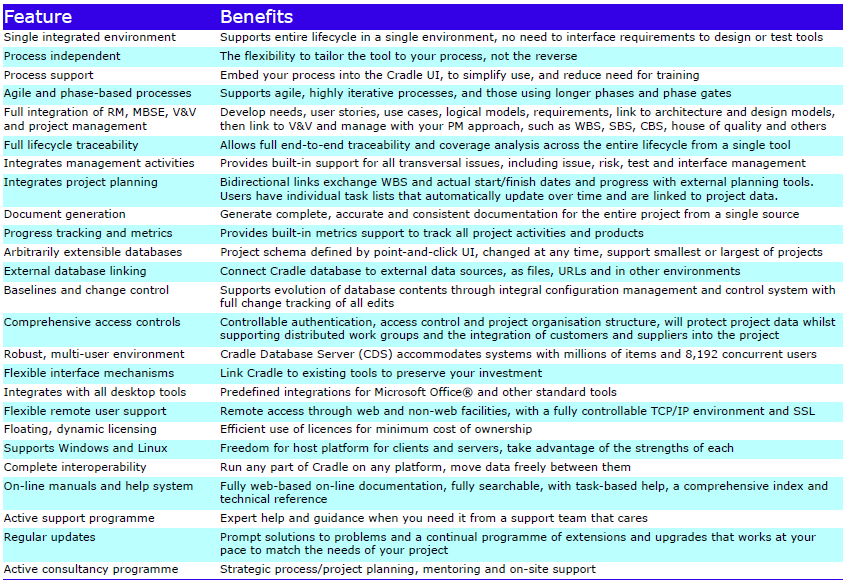
Please contact 3SL for further information about adding any of the Cradle modules to your existing system.



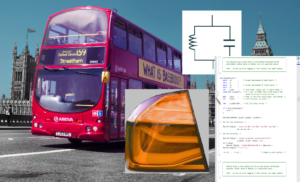
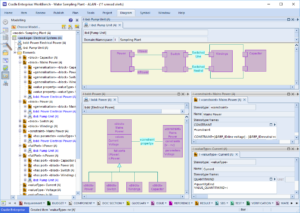
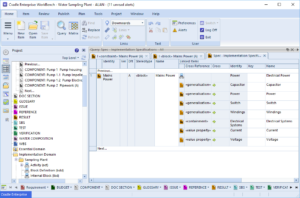
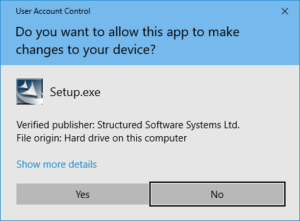
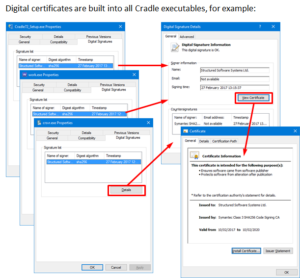

 Click to view this post
Click to view this post follow @threesl
follow @threesl